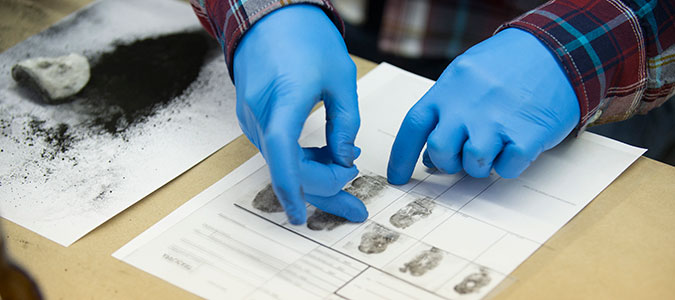Indonesia, a country with the largest number of ethnicities in the world, 1,340 ethnic groups to be exact, is prone to mass disasters. It keeps increasing in number and quality. Natural disasters such as earthquakes are sometimes accompanied by tsunamis or non-natural disasters such as aircraft accidents, ships, and related terrorism activities, make Indonesian authorities vigilant to anticipate all possibilities, especially those related to difficulties in the process of personal identification, either the victims or perpetrators of crime.
The current process of personal identification according to Interpol, is divided into 2, primary identification and secondary identification. Primary identification is identification based on 1. fingerprint; 2. Dental identification 3. DNA fingerprinting. The secondary identification includes property, as well as special signs from victims or perpetrators.
Regarding this DNA fingerprinting, FBI has its own DNA examination standards, which are also implemented by the Indonesian National Police (Polri), a DNA-based identification technique. This FBI standard is known as the CODIS or Combined DNA Index System, using the STR (Short Tandem Repeat) method. Initially, the FBI released 13 recommended loci in the individual identification process in 1997. But over time, in 2017 the FBI then increased it to 20 recommended loci for individual identification.
STR itself is a short DNA fragment and has a unique repetition so that it can distinguish individuals from one another or what is called Locus. This STR locus is contained in the nucleus DNA and is inherited from both parents.
The identification method using DNA is very necessary because it has a very high level of accuracy and specific to each individual. On population studies, a genetic variation using DNA profiles is also needed to determine the origin of a tribe associated with genetic drift and genetic flow.
In fact, it is quite common that a process of personal identification will face several obstacles, such as the absence of genetic information coming from the parents of the identified individuals. Such condition is usually found in individuals who are victims of war or mass disasters, where parents become victims of the same disaster and are not found, or parents have died first. The limitation of this information can be overcome through DNA analysis from siblings as a comparison, the analysis of kinship patterns between siblings which observe genetic similarities inherited from parents
Research on DNA fingerprinting comparison among siblings in ethnic groups in Indonesia is not yet widely implemented in Indonesia. Only a few studies have raised genetic variation for the purpose of this forensic identification. One study was conducted by Sosiawan et al (2019). The research, published in the Egyptian Journal of Forensic Sciences, has identified patterns of allele distribution between Madurese siblings inherited by their parents, using 12 STR loci and identifying sex with the Amelogeninantar gene. The results of this study showed there is 7 STR locus with 2 allele sharing among siblings, the locus of FES, F13, D8S1179, CSF1PO, D16S539, D7S820, and THO1.
This shows that Madurese have certain specific STR loci. The results of this study also showed that the average loci obtained from DNA fingerprinting examination in Madurese tribe were 10.52 loci out of the 12 loci examined. It means that the percentage of frequencies existing in this sibling kinship examination is 87.33%. This percentage is still below the full sibling examination based on DNA testing standards set by USCIS (US Citizenship and Immigration Services) (2018), which is 90%.
However, this USCIS standard cannot be used as a basis for excluding results from full sibling DNA examination. So USCIS still recommends DNA testing with other loci. This recommendation is in line with those conveyed by Lu et al (2012), is in order to produce a more accurate personal identification with a high level of discrimination, the number of existing loci until 24 loci can be added.
Author: Agung Sosiawan
Details of the research can be viewed in the following link:
https://ejfs.springeropen.com/track/pdf/10.1186/s41935-019-0143-5
The popular scientific article: “Full-sibling allelic frequency and sharing among Madurese: STR technique by 12 locus and the sex-typing amelogenin gene Egyptian Journal of Forensic Sciences, Springer Open Access” Agung Sosiawan, Ahmad Yudianto, Abdul Hadi Furqoni, Simon Martin Manyanza Nzilibiliand Indah Nuraini





